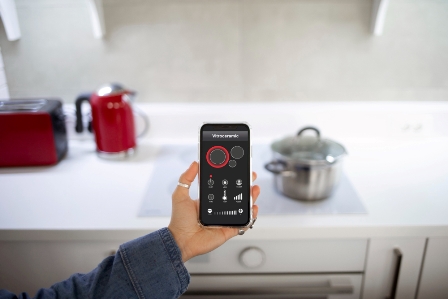In the modern era, technology is rapidly evolving, making our lives more convenient, secure, and energy-efficient. One of the most significant advancements in recent years is home automation, which integrates smart technology to control various household systems. Whether you are looking to increase security, reduce energy bills, or enhance convenience, home automation can transform the way you live. In this guide, we will explore the fundamentals of home automation, the benefits it offers, and how to get started with making your home smarter.
What is Home Automation?
Home automation refers to the use of smart devices and interconnected systems to control home functions remotely or through automated settings. These systems can include lighting, security cameras, thermostats, door locks, appliances, and entertainment units. With the help of internet connectivity, artificial intelligence (AI), and sensors, home automation allows users to manage their homes with voice commands, mobile applications, or scheduled automation.
Benefits of Home Automation
1. Convenience
One of the most appealing aspects of home automation is the ease of controlling various devices from a single interface. Whether it is adjusting the thermostat, switching off lights, or playing music, automation simplifies everyday tasks.
2. Energy Efficiency and Cost Savings
Smart home devices help optimize energy consumption, reducing waste and cutting down utility bills. Smart thermostats, for example, learn user preferences and adjust heating and cooling accordingly. Likewise, smart lighting systems can turn off automatically when no one is in the room.
3. Enhanced Security
Home automation significantly improves security by integrating smart locks, surveillance cameras, and motion detectors. Real-time alerts and remote monitoring enable homeowners to keep an eye on their property from anywhere in the world.
4. Increased Property Value
Homes equipped with smart technology are often more appealing to potential buyers. Installing home automation systems can increase a property’s market value and desirability.
5. Comfort and Customization
With automation, users can customize their home environment to suit their preferences. From setting mood lighting to programming coffee makers, automation allows for a personalized living experience.
Essential Components of a Smart Home
To create an efficient smart home, various components and devices can be integrated:
1. Smart Hubs and Controllers
A smart hub acts as the central control system for all connected devices. Popular smart hubs include Amazon Echo (Alexa), Google Nest Hub, and Apple HomePod. These allow users to control devices via voice commands or mobile apps.
2. Smart Lighting
Automated lighting systems, such as Philips Hue and LIFX, enable users to control brightness, color, and scheduling remotely. Motion sensors and timers help in energy savings by switching off lights when not needed.
3. Smart Thermostats
Devices like Nest Thermostat and Ecobee adjust heating and cooling based on user behavior and external weather conditions, ensuring comfort while saving energy.
4. Smart Security Systems
Smart security includes surveillance cameras, smart locks, and doorbell cameras like Ring and Arlo. These systems provide remote monitoring, video recording, and alerts to enhance home security.
5. Smart Appliances
Many household appliances, such as refrigerators, ovens, and washing machines, are now available with smart features. These devices can be controlled remotely and programmed for better efficiency.
6. Entertainment and Media
Smart TVs, speakers, and streaming devices like Apple TV, Roku, and Sonos provide seamless media experiences, integrating with voice assistants and mobile apps for easy control.
7. Smart Home Sensors
Motion, temperature, and humidity sensors enhance automation by triggering actions based on environmental conditions, such as adjusting blinds, lights, or air purifiers.
How to Set Up a Smart Home
Step 1: Assess Your Needs and Budget
Before investing in home automation, determine which aspects of your home you want to automate. Consider your budget and prioritize devices that provide the most convenience and savings.
Step 2: Choose a Smart Hub or Platform
Select a central control system such as Amazon Alexa, Google Assistant, or Apple HomeKit. Ensure that the devices you purchase are compatible with your chosen platform.
Step 3: Start with Essential Smart Devices
Begin with basic devices like smart lights, a thermostat, or security cameras. As you become comfortable, you can expand your setup to include additional automation features.
Step 4: Install and Integrate Devices
Most smart devices are easy to install and connect to Wi-Fi. Use mobile apps to configure settings and integrate them with your smart hub for seamless control.
Step 5: Customize Automation Settings
Program automation routines based on your daily schedule. For example, set your thermostat to adjust temperatures at specific times or automate lights to turn on when you arrive home.
Challenges and Considerations
While home automation offers numerous benefits, there are challenges to keep in mind:
- Compatibility Issues: Not all smart devices work with every hub or platform. Ensure compatibility before purchasing.
- Privacy and Security Risks: Smart devices are vulnerable to cyber threats. Use strong passwords, enable encryption, and regularly update firmware to protect against hacking.
- Initial Investment: Although automation saves money in the long run, the initial setup costs can be high. Plan your purchases wisely to stay within budget.
Future of Home Automation
The future of home automation is promising, with AI and machine learning playing a crucial role in enhancing smart home capabilities. Voice recognition, predictive analytics, and integration with renewable energy sources will make homes even more efficient and sustainable.
Conclusion
Home automation is revolutionizing modern living, offering convenience, security, and energy savings. With advancements in technology, setting up a smart home has become more accessible than ever. By carefully selecting devices and integrating automation features, homeowners can create a more efficient and comfortable living space tailored to their needs. Whether you are a beginner or an enthusiast, embracing smart technology is a step toward a smarter and more connected home.



